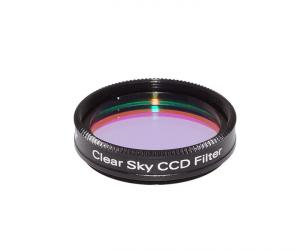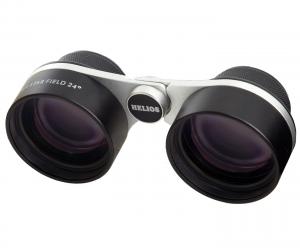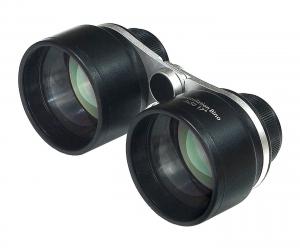- Telescopes
- Overview:
Telescopes - Achromatic Refractor
- Apochromatic Refractor
- Overview:
Apochromatic Refractor - ED Refractor - less color aberration than an achromatic
- SD APO - color free 2-element APO objective
- EDT APO - 3 element ED objective
- High End APO with 3-element APO objective - no color aberation
- Flatfield APO with flat field for Astrophotography
- All Apos and EDs from all manufacturers - large overview
- TS APO and ED from Japan with high quality optics
- Overview:
- Newtonian Telescopes
- Dobsonian Telescopes
- RC Ritchey Chretien Telescopes
- Casssegrain Telescopes
- Reflektor Telescopce with Lens Correcture
- Maksutov Cassegrain Telescopes
- GoTo Telescopes
- Solar Telescopes H-Alpha
- Overview:
- Mounts Tripods Rings Rails Power Supply ...
- Overview:
Mounts Tripods Rings Rails Power Supply ... - Mounts Equatorial with GoTo
- Mounts Equatorial without GoTo
- Mounts Azimutal with GoTo
- Mounts Azimutal without GoTo
- Mounts GoTo - Harmonic Drive
- Travel mounts for astro imaging
- Tripods Piers Polar Wedges
- Mount Control & Electronics
- Dovetail Clamps, Plates and Mount Adapters
- Tube Rings
- Power Supply
- Counterweights Balance Weights
- Mount Accessories - Other
- Overview:
- Telescope Accessories
- Overview:
Telescope Accessories - Eyepieces
- Barlows & Reducer Lenses
- Diagonal Mirrors and Prisms
- Binocular Viewers
- Finder Scopes
- Telescope Collimation and Test
- Cleaning Tools
- Transport and Storage
- Dust protection for Telescopes & Accessories
- Stray Light Protection
- Dewcaps and Heater
- Focusers, Adapters, Motorfocus
- Telescope DIY & Improvement
- Other telescope accessories
- Replacement Parts
- Overview:
- Filters
- Overview:
Filters - Color Filters and Color Filtersets
- Nebular Filters for Visual Observing
- Neutral-Density and Polfilter
- Photo Narrowband Nebular Filters
- Photo Broadband Filters
- Photo Planetary Filters
- Photo R-G-B and IR Cut Filters
- Photo - Filtersets
- Photometric Filters
- Clip Filter for DSLR Cameras
- Filter Wheels and Filterslider
- Solar Filters for white light
- Solarfilter for H-Alpha and Calcium
- Overview:
- Adaptors
- Overview:
Adaptors - Adapter 1,25" and 24,5mm
- Adapter 2"
- Adapter T2 - M42x0.75
- Adapter M48x0,75
- Adapter M54
- Adapter SC
- Adapter M63
- Adapter M68
- Adapter to other Threads
- Adapter Extensions
- Adapter camera bayonet
- Adapter Objective Filterthread
- Adapter Quick Changing , Rotation
- Adapter Eyepiece Projection
- Adapters Tilting
- Overview:
- Astrophotography and Photography
- Overview:
Astrophotography and Photography - Cooled Cameras
- Cameras without Cooling
- Deep-Sky Cameras uncooled
- Set-Offers Camera, Filter, Wheels
- Acessories for Cameras
- Travel mounts for astro imaging
- Imaging Correctors for Telescopes
- Autoguiding Cameras & Sets
- Everything for Guiding
- Focusing aids - Bahtinov mascs
- Flat Field foils and boxes
- Lenses for Cameras
- Piggyback Camera Holder
- Camera Bags, Photocases & more
- Digital Camera and Smartphone Adapter
- Other photo accessories
- Overview:
- Binoculars, Spotting Scopes, Microscopes, Range Finders
- Overview:
Binoculars, Spotting Scopes, Microscopes, Range Finders - Roof Prism Binoculars
- Binoculars with Porro prisms
- Binoculars from 100mm Aperture
- Binoculars with 1,25 inch eyepieces
- TSMX APO Binoculars
- Binoculars for Astronomy
- Binoculars Hiking Bird watching
- Monoculars - Opera Binoculars
- Accessories for Binoculars
- Spotting Scopes
- Range Finders
- Microscopy
- Bags for Phototripods & Binoculars
- Overview:
- Phototripods and Binomounts
- Books, Software
- Overview:
Books, Software - Books for Astronomy Beginners
- Star Charts and Planispheres
- Books about our Solar System
- Observing Tips for Amateurs
- Popular Astronomy Literature
- Teaching material
- Astrophotography books
- Telescopes, Observatories, Construction
- Calendars Yearbooks
- Software, Star Charts
- Books for Microscopers
- Books Nature and Animals
- Nature Photography TimeLapse
- Overview:
- Night Vision, Magnifiers, Weather, Domes & more
- Beginner Astronomy and Gift Ideas
- Second Hand & Special Offers
- New products
Manufacturer: Omegon
Product number: OM50354
EUR179.00new
EUR 179,00
incl. 19 % VAT (DE)
The VAT indicated refers to that applicable in Germany. After logging in, the VAT amount is adjusted to the applicable VAT of the stored delivery country. Therefore, the final price may vary accordingly.
excl. 6.95 € shipping costs (DE)
more details to the shipping costs ...Please log in to calculate shipping costs to your country.
There are no reviews for this product
- Details..
- Technical data..
- In the box..
- Manufacturer infos..
- Safety informations..
Omegon wide-field Binoculars - wide field of view for night observation
The look at the sky becomes an special experience. At the beginning, the 2.1x magnification is not apparent, but where the unaided eye shows only a few stars, you will find yourself in a sea of stars. The number of stars increases up to ten times of the number visible to the naked eye. Extensive nebula regions suddenly become visible in their natural size. The Andromeda galaxy, hard to make out with the unaided eye, shows its entire size of about two degrees. You can lose yourself totally in the milky way.When observing with the binoculars, one does not have the impression of looking through binoculars. The impression is more like an eyesight intensifier The starry sky appears brighter, nebula regions become visible, you get deeper into the sky.
The optics of the Omegon bino:
The base of the binoculars are opera glasses with Galilean optics. Omitting the erecting prisms results in surprisingly contrasty optics with a large and bright image and a huge field of view of 26° at night time, according to the manufacturer. This allows to observe complete constellations or regions of the milky way with dark clouds.The field of view of Galileian telescopes varies with the pupil diameter of the observer, so a practical test at daylight, with narrow pupils, has shown only 21°.
The optical design of the bino consists of two extremely fast objectives (2-element meniscus objective system) and two eyepieces produced especially for this huge field of view. Stars are dot-like over the entire field.
Basically the field of view of Galilean opera glasses with their divergent eyepieces is very small. The only way to widen it is to use extremely fast (f/2 or faster) objective lenses. For this reason, the bino has 42 mm aperture, despite the calculation for Keplerian systems results in an exit pupil of 42 mm / 2,1 = 20 mm - far too oversized for the human eye.
Actually, the exit pupil of this bino equals the diameter of the eye pupil of the observer, and the entrance pupil is 2.3 times as large. If one´s eye has 7 mm pupil diameter in the dark, the entrance pupil will have 2.1 * 7 mm = 14.7 mm diameter.
Note: A Galilean telescope system has no eye-relief. The best way to see the widest field of view is to "press" your eyes as close as possible to the eyepieces. When wearing eyeglasses, the field of view may be reduced. With very strong eyeglass prescriptions with stronger than -6 diopter, it may not be possible to reach the infinity focus. In such cases, wearing contact lenses is recommended.
| Clear aperture: | 42 mm |
| Magnification: | 2.1x |
| True field of view: | 26° (depending on pupil size) |
| Max. dimensions: | 128x46x54 mm |
| Interpupillary distance: | max. 74 mm mm |
| Diopter compensation: | +/6 dioptres |
| Focusing: | By individual focusing |
| Weight: | 375 grams |
| Filterthread: | M48x0,75 female thread on the objective lenses |
| Manufacturer / Importeur: | Nimax GmbH |
| Street: | Otto-Lilienthal-Str. 9 |
| ZIP / City: | 86899 Lamdsberg a. Lech |
| Country: | Germany |
| Telefon number: | +49 8191 9404926 |
| Email: | info@nimax.de |
| Website: | www.nimax.de |
Safety informations: PDF Download
Recommended accessories
Adaptors
Cleaning & Collimating
Eyepiece-side accessories like Filters
Similar Products
Reviews

















